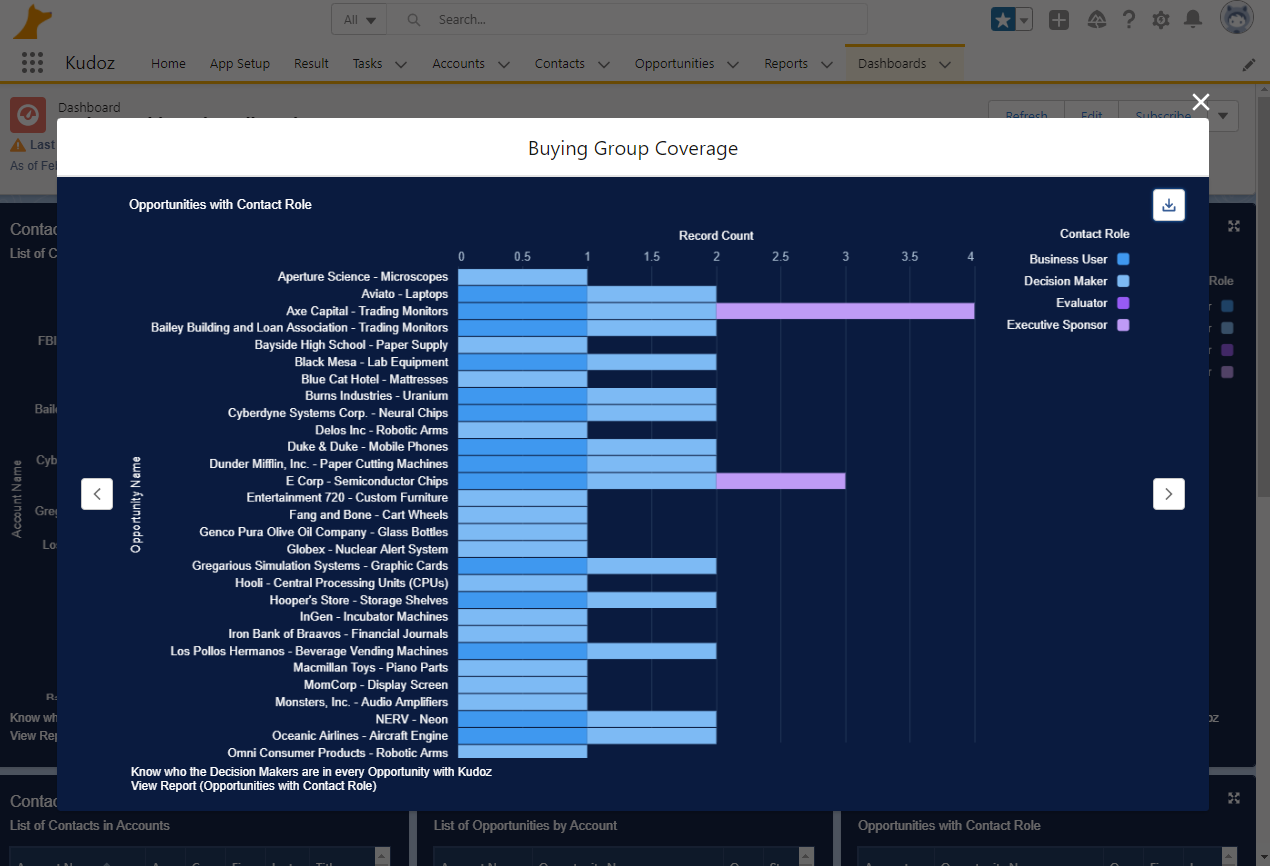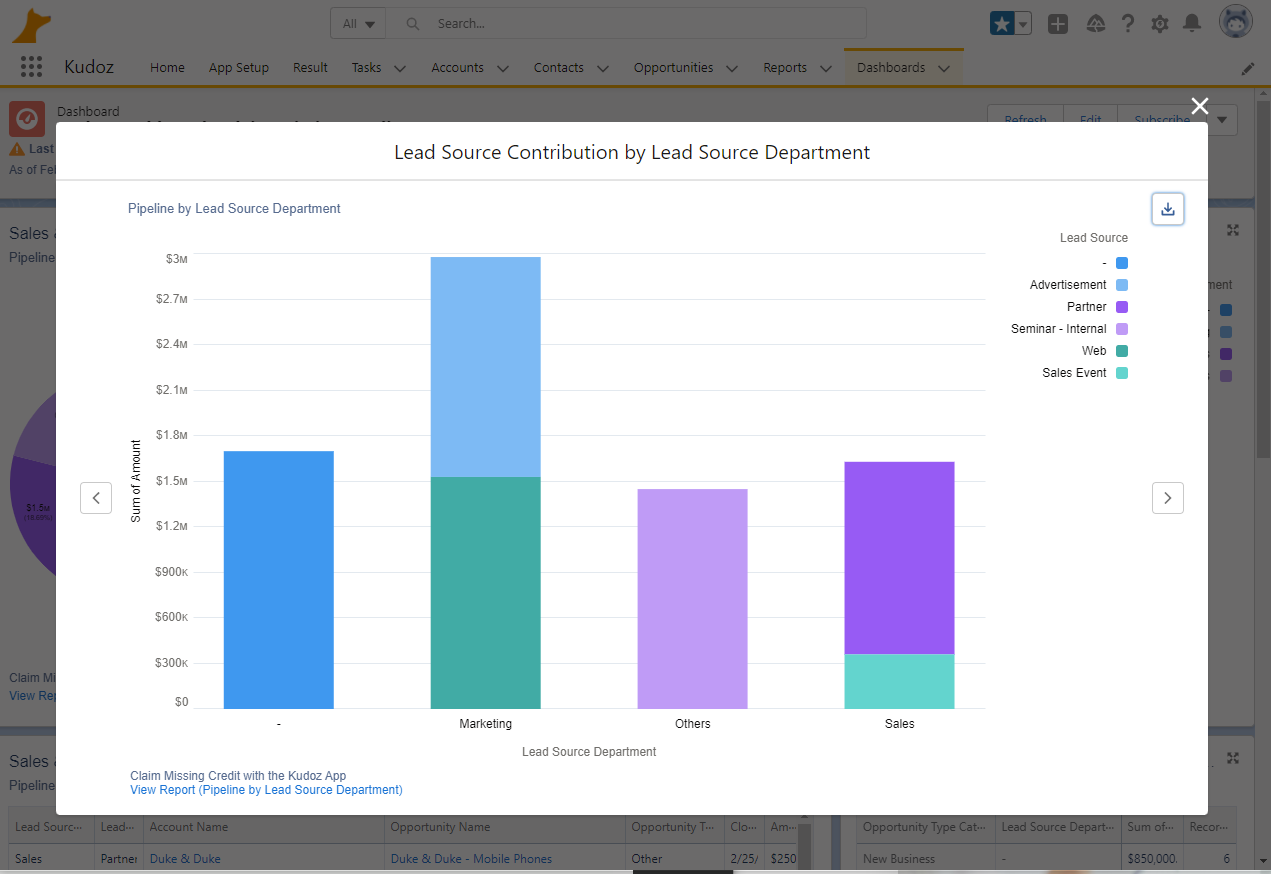6 Ways B2B Marketers Can Justify Their Marketing Budget
Feb 22, 2022Marketing teams are under constant pressure to justify their latest budgets.
However, it is not always easy to prove your marketing spend or its value due to the long sales cycle of B2B sales, limited time, and resources.
Nonetheless, you can employ several strategies to demonstrate that your marketing activities are beneficial to the company and generate a positive ROI.
If you can continuously demonstrate that the marketing campaigns have a positive ROI, you can justify your budget requests, including negotiating for additional funds.
So what are the steps you can take to justify your marketing budget?
- Get your Campaigns in Front of the Right People
- Set Measurable Goals for your Business
- Get Access to Powerful Insights from Start to Finish
- Determine the Right Marketing Tactics for Each Channel
- Allocate your Budget Efficiently
- Use Technology to Optimize Campaigns
1. Get your Campaigns in Front of the Right People
One of the costly mistakes B2B marketers make is targeting the wrong audience. B2B marketers lose about 26% of their marketing budgets pursuing the wrong leads. This means that getting results from your B2B targets starts with knowing your audience, their needs, and the platforms and channels they hang out on.
B2B sales include at least six decision-makers.
Therefore, as a marketer, your goal is to target these decision-makers (not necessarily users).
How can you identify your audience and target the right people with your B2B marketing campaigns?
- Update your customer and target customer data. Using the wrong data is the first mistake B2B marketers make when targeting customers. Start by cleaning your data to eliminate redundancy and assign unique identifiers for each entry. Next, eliminate any gaps present in your data. Kudoz can help you identify missing attributes if you use Salesforce for your data needs. As a rule, when working with data to evaluate your leads, use the most recent data when determining things like search intent and search data.
- Use insights from current customers to form a basis for the next target customers. For example, if you are selling a technology product or service, you might have noticed that reaching out to the chief technology officer works most of the time. You can then target people with similar positions at other organizations.
- Keep up with changing customer preferences and ensure your data and marketing strategies reflect these changes.
Remember, the goal is to market to people in a position of influence within an organization. This includes members of the executive team.
To measure your effectiveness in building a buying group with decision-makers, you'll want to maximize your potential to create a buying group that enhances your ability to close the deal.
Typically, this ensures six contacts tied to an opportunity and a mix of decision-makers, sponsors, evaluators, and business users.

Image of a Dashboard in the Kudoz Salesforce App that measures the Buying Group Coverage.
2. Set Measurable Goals for your Business
Justifying your marketing budget is easier when you set measurable marketing goals.
This allows you to demonstrate the results of your marketing campaigns at each step of the marketing funnel.
The first step in setting measurable B2B marketing goals is to determine the organization's overall objectives. This helps you narrow down your audience and develop strategies to lead you to these goals.
Some examples of measurable marketing goals include:
- Shorten the sales cycle
- Double/triple the number of leads to the business
- Generate more revenue
- Generating more followers/engagement on social media
Here are some steps to help you set measurable goals:
- Identify the current marketing black holes or weaknesses in your company.
- Prioritize the goals that would make the most significant difference in your organization.
- Break down the steps you need to achieve a long-term goal. This creates small measurable steps along the way, which your marketing team can measure and document as successes.
Your CEO, CMO, CFO, and other business leaders at your company need real-time access to how Sales & Marketing are contributing to the pipeline. Having a simplified report can allow your C-Level leaders to make better decisions faster and keep Marketing in mind when there are opportunities for Marketing to fill the future gaps in the pipeline.

Image of a Dashboard in the Kudoz Salesforce App that measures the Sales & Marketing Pipeline performance.
3. Get Access to Powerful Insights from Start to Finish
B2B sales timelines take a long time due to the number of people involved in the decision-making process. However, this doesn't mean that you cannot track results along the way.
We've already discussed setting measurable goals for your B2B marketing campaigns. We also mentioned the need for breaking down long-term goals into smaller short-term goals.
For each of these short-term goals, set up the key performance indicators. Salesforce analytics gives you insights into your numbers so you can regularly track the KPIs that matter to your business.
Some of the metrics you can track in your B2B marketing efforts:
- Email signups
- Source of leads
- Lead quality
- Sales close rate
- ROI
- Customer acquisition cost
- Customer lifetime value
- Visitor to lead conversion
- Landing page conversion, etc.
An impactful way to prove that Marketing is working is by measuring the percentage of New Business generated by Marketing. Depending on your industry's maturity, it could range from 30% to 70%.
When budget conversations happen, you'll be in the drivers' seat by letting the company know the impact on the pipeline with a reduced budget. In most cases, they'll switch the conversation to "If we gave you $1 more, how much would that return?"

Image of a Dashboard in the Kudoz Salesforce App that measures the percentage of New Business Impacted by Marketing.
4. Determine the Right Marketing Tactics for Each Channel
There's an endless list of B2B markets that could generate leads for your business. However, it is unrealistic for you to be on all of these platforms unless you have an endless marketing budget and an extensive team at your disposal.
Your goal as a B2B marketer is not to be on all platforms but to be on those that generate the highest quality leads and have a demonstrated ROI.
To choose the right channel for your marketing efforts:
- Determine the overall strategy, products, and vision of your company
- Consider what your competitors are doing. Which marketing platforms are working for them?
- What channels are already working for your company?
Some marketing channels that work in B2B marketing include:
- Conferences and tradeshows
- Content marketing
- Social media marketing
- Webinars
- Email marketing
- Retargeting
- Traditional media
Your Marketing managers will quickly know what's working and not working by looking at the pipeline generated by the lead source. 
Image of a Dashboard in the Kudoz Salesforce App that displays a drill-down of Lead Source by Sales & Marketing Pipeline performance.
Once you have figured out the best marketing channels, you can now determine the marketing tactics to use. Of course, these tactics depend on the marketing channels you use. For instance, what you post on Twitter will not work on platforms such as Instagram or LinkedIn.
Some of the marketing strategies you can use include:
- Focusing on brand marketing
- Build a referral strategy
- Reaching out to customers through social media
- Publishing targeted articles
5. Allocate your Budget efficiently
To justify a B2B marketing budget, you must demonstrate that you have used previous budgets effectively.
Before you allocate your marketing budget, you must know the amount you are working with. In most cases, businesses spend about 10% of their overall revenue on marketing. For new companies, the spending is about 20%. The point is you should be aware of the amount of money you have to set aside for marketing.
Now that you know how much you have to spend on marketing activities, it’s time to start allocating these funds to your marketing efforts:
- Create a marketing plan for the year. We identified measurable marketing goals, channels, and tactics in previous steps. Now it's time to use the results from these steps to create a marketing plan. As a general rule, dedicate 70% of your budget to tactics that have been proven to work, 20% to strategies that could grow the business and 10% to experimental strategies.
- Calculate the expected costs of each marketing channel/tactic and the potential ROI. You can use data from competitors or market research to determine the potential ROI.
- Divide up the marketing budget
- Track your campaigns at each step, improve your strategy and identify how you can reallocate your budget to working strategies. Kudoz provides monthly reporting and quarterly business reviews to keep you on top of your marketing results and impact on the business, to help you maximize your marketing efforts on Salesforce.
6. Use Technology to Optimize Campaigns
To justify a B2B marketing budget, you must demonstrate that you have used previous budgets effectively.
Marketing technology is evolving. New technologies and software to improve and bring visibility into your marketing campaigns.
Technology will play an essential role in marketing in 2022, thanks to the growing use of digital media for entertainment, work, and education and the ever-increasing spending on online purchases.
Some of the marketing technologies to leverage in your marketing efforts include:
- Analytics: analytics tools such as Salesforce Analytics are designed to track your marketing efforts across multiple platforms. Analytics tools help you determine where your leads are coming from, your web traffic, conversions, etc. Kudoz, a platform that works with Salesforce, provides deeper insights into your lead generation efforts by pinpointing exactly where your leads are coming from. The tool also highlights any missing sources so you can deal with them as soon as they occur.
- Conversion optimization: the goal of any marketing campaign is to convert leads to customers. Marketing technology tools can track your conversion efforts, including visitor behavior on a page. This can reveal which pages or content are working for most visitors and prompt further action.
- Account-based marketing: if email marketing is a part of your marketing efforts, you should be using account-based marketing for your B2B marketing efforts. You can combine Salesforce with Pardot to take your ABM marketing efforts to the next level.
- Remarketing is a cost-effective strategy that allows you to display ads to people who have expressed an interest in your product or service. For instance, remarketing can work with existing website visitors. Google Ads is a good tool to use to optimize your remarketing efforts.
How does using technology help you justify your marketing budget? An analytics tool such as Kudoz tells you exactly where your leads are coming from. You realize that most of your leads come from cold email prospects and organic visitors to your website.
You can use this data to demonstrate to the c-suite executives that doubling down on content generation and email marketing have a higher impact on the company’s ROI.
Bringing it all Together
Limited resources, poor data quality, and lack of a demonstrable ROI are some of the reasons your boss might be looking into cutting your marketing budget. Luckily, the steps we’ve discussed above can help you convince your boss that your marketing budget is necessary (and even negotiate a raise in the budget). If you are already using Salesforce, you can now take your analytics to the next level with Kudoz.
The Salesforce App allows marketers to deal with missing values in data as soon as they occur and generate reliable monthly and quarterly reports that you can use to demonstrate the ROI of your marketing efforts.
Stay connected with news and updates!
Join our mailing list to receive the latest news and updates from our team.
Don't worry, your information will not be shared.





